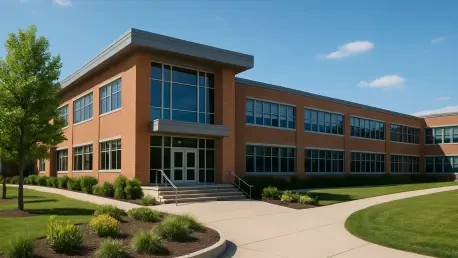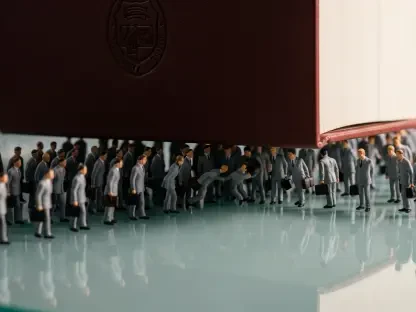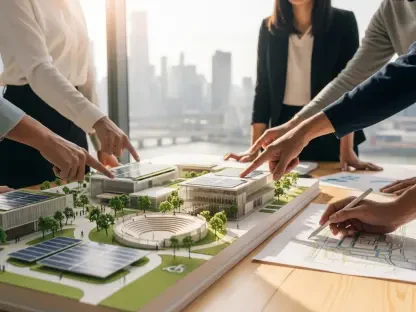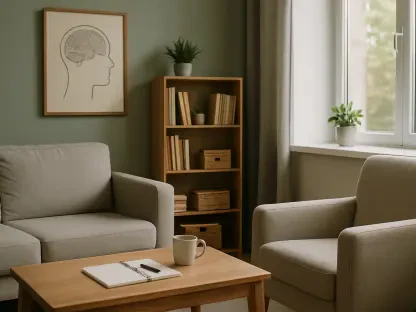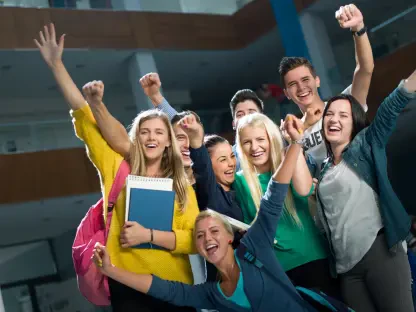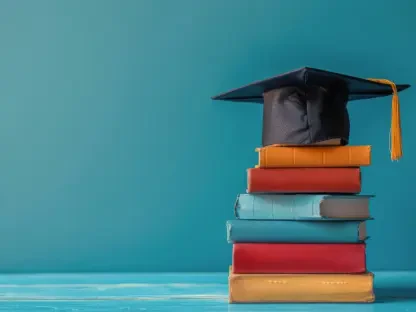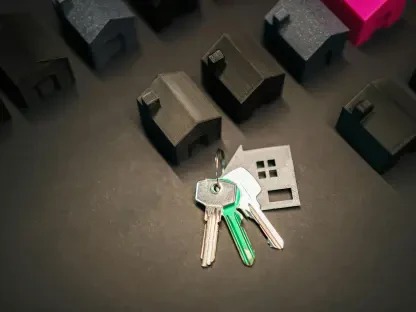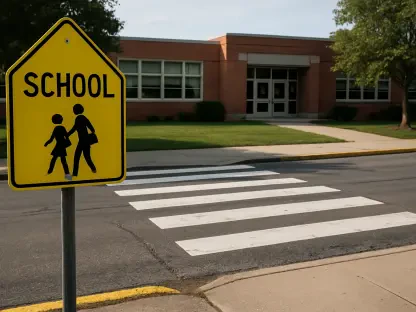In the heart of Tacoma, a quiet revolution is unfolding within the realm of public education, where the very spaces in which students learn are becoming catalysts for change, and Tacoma Public Schools (TPS) is leading the charge by reimagining the built environment as a tool to enhance learning and strengthen community ties. Through innovative partnerships and purposeful design, the district is creating facilities that do more than house classrooms—they connect students to real-world opportunities and local industries. This approach challenges traditional notions of what a school should be, embedding hands-on experiences directly into the student journey. As Adam Kulaas, Chief of Schools at TPS, aptly stated, the goal is to craft learning environments that integrate practical, real-world skills into education. What emerges is a model that disrupts conventional thinking, not through chaos, but through intentional design. This transformation raises compelling questions about how physical spaces can redefine educational outcomes and community engagement on a broader scale.
1. Pioneering Change with Maritime 253
Tacoma Public Schools, in collaboration with the Port of Tacoma, is constructing Maritime 253, a groundbreaking skills center set to open in the fall of 2026 along the Foss Waterway, directly opposite downtown Tacoma. This campus, strategically positioned next to the port’s new business center, is designed to immerse students in the realities of maritime trades, logistics, and environmental science—sectors integral to the region’s economy. The location itself serves as a bridge between classroom theory and practical application, ensuring that students acquire tangible skills in authentic settings. TPS Superintendent Josh Garcia emphasized that such initiatives create a direct pipeline from education to employment, benefiting not only the students but also the broader region by addressing workforce demands. This project exemplifies how thoughtful placement of educational facilities can align with industry needs, fostering a seamless transition for young learners into professional roles.
Beyond its strategic location, Maritime 253 represents a shared vision between educational and industrial stakeholders, highlighting the power of mutual benefit in public projects. Port of Tacoma Commission President John McCarthy has expressed enthusiasm for the partnership, noting its potential to connect young people with family-wage jobs while meeting critical employer needs. Morris Aldridge, TPS Executive Director of Planning and Construction, further underscored the value of such collaborations, pointing to the enhanced outcomes achieved through shared ideas, prime locations, and collective expertise. For taxpayers, this approach ensures that public resources are maximized, delivering value that extends beyond the classroom. The synergy between TPS and its partners illustrates a forward-thinking model where education is not an isolated endeavor but a communal asset, paving the way for sustainable economic growth and opportunity.
2. Building on a History of Bold Collaborations
Tacoma Public Schools has a well-established track record of forging innovative partnerships that redefine educational spaces, a practice that continues to evolve with each new project. One notable example is the Environmental Learning Center, opened in 2017 at Point Defiance Zoo & Aquarium, which serves as a campus for TPS’ Science and Math Institute while supporting the zoo’s educational outreach. Here, students engage in biology and environmental science studies within a living laboratory, guided by professionals such as zookeepers and marine biologists. This immersive setting transforms abstract concepts into tangible experiences, allowing learners to interact directly with their subject matter. Such facilities demonstrate how educational design can integrate with community resources to create unique learning opportunities that benefit both students and the public.
Looking ahead, TPS is set to launch a regional center for technology and innovation at LeMay—America’s Car Museum, a project that will blend Tacoma’s automotive heritage with cutting-edge STEM education. This hub will host activities like robotics competitions, e-sports tournaments, and drone racing, offering students a platform to explore modern technologies in a historically significant context. As Adam Kulaas noted, these partnerships transcend the physical structures, embodying a design mindset focused on possibility for students, families, and the wider community. By aligning educational facilities with cultural and industrial landmarks, TPS ensures that learning environments are not just functional but inspirational, fostering a sense of connection and purpose. This ongoing commitment to innovative collaborations highlights a scalable approach that other districts could adapt to their own regional strengths.
3. The Broader Significance of Strategic Alliances
The projects undertaken by Tacoma Public Schools mark a pivotal shift in how school districts can approach education, infrastructure, and community development through strategic alliances. At the core of TPS’ philosophy is a steadfast commitment to prioritizing student needs, ensuring that every initiative serves the best interests of young learners. These partnerships redefine the role of schools as community anchors, creating spaces that serve multiple purposes and extend benefits beyond the student body. By integrating educational goals with regional realities, as TPS Superintendent Josh Garcia noted, these efforts act as launchpads for student innovation, preparing them for futures directly tied to local opportunities. This model challenges other districts to think beyond traditional boundaries, envisioning schools as integral components of community ecosystems.
Moreover, the collaborative projects at TPS offer distinct advantages that amplify their impact on both education and society. By maximizing public investment, these initiatives achieve multiple missions—educational, economic, and social—within shared spaces. They also align curriculum with workforce demands, equipping students with skills for real careers in industries like maritime and technology. Additionally, the creation of facilities accessible to both students and the broader community fosters a sense of shared ownership and purpose. This approach not only enhances learning outcomes but also strengthens community bonds, demonstrating that well-designed schools can be catalysts for collective progress. The success of these endeavors provides a compelling blueprint for how education systems elsewhere can leverage partnerships to address local needs effectively.
4. Essential Insights for Builders and Designers
Engaging in partner projects like those of Tacoma Public Schools presents unique challenges and opportunities for builders and designers, who must navigate the complexities of multiple missions, audiences, and funding streams. These endeavors require managing not just construction sites but also the diverse priorities of public agencies with often contrasting perspectives. Morris Aldridge, TPS Executive Director of Planning and Construction, emphasized the necessity of clearly understanding each partner’s individual needs, from overarching vision to specific procurement requirements. This clarity is critical to aligning goals and ensuring compliance, particularly from an auditing standpoint. For professionals in the field, success hinges on meticulous planning and an ability to address the nuanced demands of collaborative projects, ensuring that the end result serves all stakeholders effectively.
To excel in such multifaceted environments, builders and designers can adopt several practical strategies. First, grasping the distinct “why” behind each partner—whether it’s student outcomes or economic development—helps in crafting spaces that meet dual purposes. Acting as a translator between different terminologies, such as education and municipal language, ensures aligned expectations. Designing for flexibility is also key, as spaces often need to serve students by day and the public by night. Additionally, accounting for varied funding timelines, like bond dollars and grants, requires early identification of potential conflicts. Finally, maintaining neutrality and adaptability allows professionals to facilitate solutions when tensions arise, keeping projects on track. Ultimately, these roles extend beyond construction to collaboration, positioning builders and designers as pivotal in transforming ambitious ideas into tangible, impactful realities.
5. Navigating the Path to Effective Public Partnerships
Creating successful public partnerships, as exemplified by Tacoma Public Schools, may appear seamless when completed, but behind the scenes, they demand vision, trust, and extensive documentation. A structured approach is essential to ensure clarity and sustainability in these collaborations. Start with a Letter of Intent, if applicable, to outline initial concepts and set a clear direction. Follow this with a Memorandum of Understanding to formalize shared missions and roles, fostering trust from the outset. Interlocal Agreements among public entities should define financial contributions and shared services early on. Post-construction, a Ground Lease clarifies long-term operational responsibilities, such as maintenance. These steps, while meticulous, lay a solid foundation for partnerships that can withstand challenges and deliver lasting value to all involved parties.
Further refining the collaboration, a Joint Use Agreement addresses potential risks and responsibilities for shared spaces, while amendments built into agreements allow for adaptability as circumstances evolve. Documenting every aspect ensures that future leaders inherit a clear understanding of the partnership’s original intent, preserving its purpose over time. This roadmap, though labor-intensive, underscores that strong partnerships are not just about erecting buildings but about shaping futures. Each element, from formal agreements to detailed records, plays a crucial role in maintaining the integrity and effectiveness of collaborative efforts. By adhering to such a framework, public entities can replicate the success seen in Tacoma, creating educational environments that serve as cornerstones for community growth and student achievement in an ever-changing landscape.
6. Reflecting on a Model for Future Growth
Looking back, Tacoma Public Schools demonstrated remarkable foresight in reshaping education through innovative design and strategic partnerships. Projects like Maritime 253 and the Environmental Learning Center stood as testaments to what could be achieved when schools were envisioned as more than mere buildings, but as vital community hubs. Under the guidance of figures like Alicia Lawver, Director of Strategic Planning for TPS, who managed the intricate relationships and documentation behind these capital alliances, the district crafted a legacy of collaboration. These efforts not only enhanced student learning but also fortified community ties, proving that educational spaces could drive both personal and regional progress. Moving forward, other districts can draw inspiration from this model, exploring how to integrate local industries and resources into their own educational frameworks. The challenge lies in fostering similar partnerships, prioritizing student-centric design, and ensuring that public investments yield multifaceted benefits for years to come.
